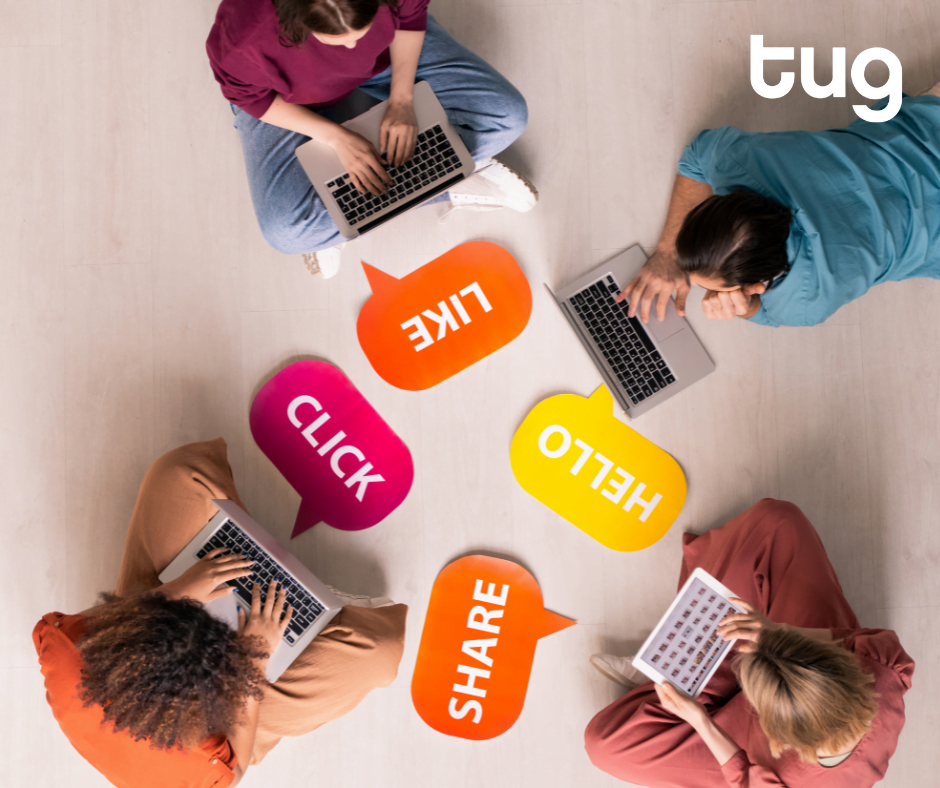
The Great Social Media Migration: Where Are People Going?
At a time where we’re seeing social media platforms appearing all over the web, it’s important to understand what these new apps have to offer, whether they’re worth brands investing into, and why they’re so popular with the Gen-Z demographic.
This year we have seen the rise of BeReal, the decline of Facebook, users pushing towards more authentic video content, Metaverse in trouble after Mark Zuckerberg’s empire lost hundreds of billions of dollars in value, and the Twitter takeover by Elon Musk. Social Media by its very nature has always been volatile, with new updates and apps being rolled out consistently. However, as users are becoming less passive and more aware of the way they use community platforms and which brands they align themselves with, we are seeing a shift towards new and emerging apps that offer a potentially new perspective on the Social Media landscape.
Hive
Hive made headlines earlier this month after gaining a surge of new users all fleeing Twitter, but what is it? It is one of the few social networks which has a female founder as it was created by self-taught coder Kassandra Pop in 2019. It has been described as bringing together different elements of other social networks with the visuals of Instagram, the text only elements of Twitter and the homepage soundtrack of MySpace. To me, it feels like the early days of Instagram with lots of imagery and it is fairly un-regulated.
As with all new social networks, it focuses on being more authentic than Instagram and allows space for real conversations. It has a chronological timeline (which has definitely been missing from the big four) but also themed spaces allowing users to tap into niche groups built around their interests and creating new networks with genuine conversations. You need to use hashtags in your posts to ensure it appears in the right themed feeds, which also feels like a bit of a throwback.
There are some issues which the platform are trying to iron out including bugs which make it crash – annoying but perhaps not surprising considering the rapid growth. There are also some problems with NSFW content which is supposed to be flagged by the user, but in my experience is not.
Overall, it feels like a nostalgic network harking back to the early days of social media, but with a Gen-Z twist. I can see it being a great place for creators, influencers and small businesses looking to build a real network of connections and looking to engage in conversation but there is still some work to be done for this app to live up to the current hype.
Telegram
Telegram was founded by Pavel Durov. It is one of the top 10 most downloaded messaging apps in the world. This app quickly rose to popularity during the Russian-Ukraine war when many civilians used it to show what happened in the war.
Pavel Durov was paying for the operating costs himself for a long time. Then he introduced the Telegram Open Network (TON) blockchain platform with its own cryptocurrency “Gram”. This platform promised millions of transactions a second versus the 15 transactions a second in mainstream blockchain infrastructure.
It received the biggest initial coin offering (ICO) with 1.7 billion from investors. All of these offerings were kept private. Soon Telegram spent 90% of 1.7 billion on its own expenses.
Securities and Exchange commissions said TON would contribute to the distribution of unregistered securities. This quickly brought TON and “gram” to a premature end.
Apart from its controversial and short-lived crypto journey of TON, Telegram is also riddled with safety concerns over its encryption feature. Elias Kampa, Telegram’s Former Head Of Growth Business and Partnerships, said there was an inner circle of engineers/developers who had access to the number of active users. Most of the data were extremely restrictive. While on WhatsApp, which is now riddled with data breach, encryption feature is switched on by default. On Telegram, you have to turn on the ‘secret chat’ feature to have encryption mode on. Also, encryption is not switched on for group chats.
That said, it is still the most popular app especially amongst many Asian countries as it has a 2.2GB limit on file sharing. This means documents, media etc can be shared easily amongst people.
Mastodon
Mastodon resides inside the Fediverse and has many decentralised servers. Within Mastodon, you can create your own instance using the protocol. You can literally do this with your own server. Here’s how.
So technically a decentralised network is like an open art show where we can create our own art and also look at other artists’ works. A centralised network is an exhibition – you enter a particular room only to see art from a specific artist. You also have very little room to explore or tweak the room as it is controlled by the law of the museum.
But the workings of the Fediverse is still quite opaque. There are places on the Fediverse which are extremely queer friendly. Yet, in 2019 Mastodon came to battle with Gab, an American alt-tech social networking service which is has a lot of “Nazis” and racist users. Gab created its own server and soon the moderators were busy trying to deal with the problem.
Even Mastodon’s founder Eugen “Gargron” Rochko admitted that he couldn’t actually “evict” the Gab server. He told The Verge: “You have to understand it’s not actually possible to do anything platform-wide because it’s decentralised. I don’t have control.”
Discord
Initially released in 2015, Discord is a VoIP (voice over IP) and instant messaging social platform.
Users have the ability to communicate with voice calls, video calls, text messaging, media and files in private chats or as part of communities called “servers”.
Discord servers are free to use and organised into topic based channels where members can collaborate, share and chat with a selected group on a private channel.
The UI has been known mainly as a chat app but some of the most commonly used Discord servers include ‘Midjourney’, used to create AI art from text-to-image.
Besides the chat app offering, Discord can be used to submit a text prompt and generate visual art through the Midjourney server. Midjourney gained popularity in early 2022 bringing a new kind of users into Discord’s servers.
Discord was commonly used amongst gamers as an invite group chat room where they can socialise while playing also through voice chat or live stream their screens.
It also offers a lot of servers that are more oriented towards cryptocurrencies or other focused topics.
What we like about Discord is that you can also have your very own server and set your own ‘regulations’ , invite your friends only or privately create and share art and discussions amongst a selected group of like minded people. It comes across as a social platform and a chat app.
Accessibility wise you can download Discord on any device and there haven’t been any major issues with using it, the Open AI provides constant updates on any issues or new additions.
The servers are free to use but there is also an option to opt in for a paid membership which offers you more features by using Discord Nitro. We haven’t seen any adverts in the UI so far.
In terms of moderation we have seen particular words that might be considered inappropriate being blocked from the UI.
Due to its vast range of custom servers Discord can be a great opportunity for any social group, crypto nerds, foodies, creators and so on to create their own online communities to network, collaborate, share and discuss topics. Familiar to Instagram’s algorithm which works to create echo chambers based on shared interests.
How to access discord? You can either find and join a server (might need to be invited first) or make your own!
Geneva
Launched in March 2020, Geneva “is an all-in-one communication app for groups, clubs, and communities – designed to give you everything you need to stay connected to the groups you love and help you make new friends through the groups you’ve yet to find” (as described on their website). Using a combination of features, Geneva offers written posts in forum-style rooms (like on Reddit), as well as videos, audio, and written chat functions (like Slack), creating an all-in-one platform, whether you’re looking to chat with a friend, host a video meeting, join a community, or live broadcast (such as on IG Stories or Clubhouse).
The Geneva app is all built around a central hub which it refers to as a ‘home’. A home refers to every group a user either joins or creates for the different groups in their life, such as work, university, and friends. Within each ‘home’ there are rooms, which work as separate spaces for different conversation topics. The five types of rooms available are: chat rooms, post rooms (forums), audio rooms (group phone calls), video rooms (similar to zoom or teams), and broadcast rooms (live streams).
Another unique feature that Geneva offers is what they call a ‘gate’. These can be placed on a users ‘home’, ensuring an additional level of security before a new member is allowed to join. A gate has multiple functions, such as requiring approval to join, having to answer a questionnaire, paying an entry fee, and giving themselves a nickname. There is also a calendar feature, whereby users can easily see upcoming events (both virtual and IRL), as well as create their own, host gatherings, and invite people to attend.
Although still a relatively new app, Geneva has carefully crafted a space in which its multiple features provide users with an all round experience, not requiring additional apps to support their various communication needs. Whether used for professional reasons, or as a means to converse with friends and family, Geneva has brought ‘together the best of these (other social media) platforms into a single, intuitive product: an all-in-one group communication app that works just as well for a 10 person book club as it does for a community of 100,000 cat lovers”.
So, what’s next?
As the world of social media expands, we will continue to see new networks, and even more from the Fediverse. But, will the rise of these new networks give a boost to current giants to improve their UI and moderation?
We are already seeing the social media OG’s, Instagram, Facebook, and Twitter adopting many of the features from new and popular social media platforms, so does this really mean audiences are migrating towards better programmes, or that the Fediverse is reproducing the same features across different sites, using slightly different UI to market each network to specific audience? Volatile in nature, social media shows no signs of slowing down, and this ongoing influx of new apps and features is evidence that audiences are more demanding in their expectations from these platforms, and that if they are to remain relevant, the networks we have grown up using must adapt alongside these new demands.


